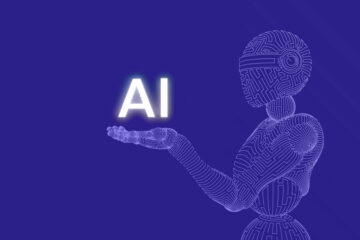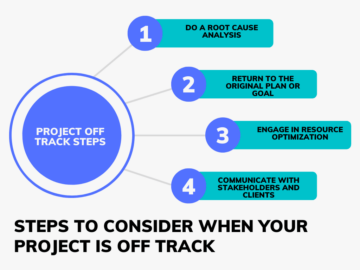
Table of contents
Java Full-Stack Development plays a vital role in the modern tech industry, where web applications are at the heart of businesses worldwide. As a Java Full-Stack Developer, you can work on an application’s front-end and back-end components, allowing you to contribute to the entire development process. This versatility is highly sought after by employers, as it enables you to work independently or as part of a team, ensuring seamless integration and collaboration across different layers of the application.
Java is a widely-used programming language known for its scalability, reliability, and extensive ecosystem of frameworks and libraries, making it a popular choice for building enterprise-level applications. By mastering Java Full-Stack Development, you position yourself at the forefront of the industry, opening up numerous career opportunities and possibilities for growth and innovation.
Now, let’s dive deeper into the various aspects of Java Full-Stack Development and explore the skills, tools, and career paths that await you.
Understanding Java Full-Stack Development
Full-Stack Development refers to the practice of working on both the front-end and back-end components of a web application. A Full-Stack Developer is proficient in multiple programming languages and frameworks, allowing them to handle all aspects of the development process, from designing the user interface to managing the server-side logic. This comprehensive skill set enables Full-Stack Developers to create fully functional, interactive, and responsive applications. The significance of Full-Stack Development lies in its ability to provide end-to-end solutions and a seamless user experience by bridging the gap between different layers of an application.
Role of Java in Full-Stack Development
Java is a versatile programming language that plays a crucial role in Full-Stack Development. Known for its robustness, scalability, and wide range of libraries and frameworks, Java is well-suited for building complex, enterprise-level applications. On the back-end, Java provides a powerful foundation for server-side development, offering frameworks like Spring and Java EE to handle data storage, business logic, and integration with external systems. On the front-end, Java can be used in conjunction with frameworks like JavaServer Faces (JSF) or JavaFX to create dynamic and interactive user interfaces. The use of Java in both front-end and back-end development ensures consistency, maintainability, and efficient communication between different layers of the application.
Exploring the different layers of Full-Stack Development
Full-Stack Development consists of several layers, each responsible for different aspects of the application. These layers include:
- Presentation Layer: This layer focuses on the user interface and handles the front-end development using technologies such as HTML, CSS, and JavaScript. Full-Stack Developers utilize Java-based frameworks like JavaServer Pages (JSP) or Thymeleaf to generate dynamic content and enhance the user experience.
- Application Layer: Also known as the business logic layer, this layer encompasses server-side development using Java frameworks like Spring or Java EE. Full-Stack Developers leverage these frameworks to implement the application’s core functionality, handle data processing, and interact with databases.
- Data Layer: The data layer deals with data storage, retrieval, and management. Full-Stack Developers work with databases, utilizing technologies like Java Persistence API (JPA) or Hibernate to interact with relational databases or NoSQL databases like MongoDB for handling unstructured data.
- Infrastructure Layer: This layer focuses on deploying, configuring, and managing the application infrastructure. Full-Stack Developers may utilize tools like Apache Tomcat or Docker for application deployment and cloud services like Amazon Web Services (AWS) or Google Cloud Platform (GCP) for scalability and reliability.
By understanding the different layers of Full-Stack Development and the role Java plays in each, aspiring Full-Stack Developers can gain a holistic view of the development process and effectively contribute to all aspects of the application.
Essential Skills for Java Full-Stack Developers
- Core Java programming skills
A strong foundation in core Java programming is essential to excel as a Java Full-Stack Developer. This includes proficiency in Java syntax, object-oriented programming (OOP) concepts, exception handling, multithreading, and the Java Collections framework. Full-Stack Developers should be comfortable with concepts like inheritance, polymorphism, and encapsulation, as they form the building blocks of Java development.
- Front-end development skills
Front-end development skills are crucial for creating visually appealing and interactive user interfaces. Full-Stack Developers should be proficient in HTML, CSS, and JavaScript to design and implement responsive web pages. They should have knowledge of CSS frameworks like Bootstrap and JavaScript libraries like jQuery to enhance the user experience and ensure cross-browser compatibility.
- Back-end development skills
In-depth knowledge of Java frameworks is vital for back-end development. Full-Stack Developers should be familiar with popular frameworks like Spring or Java EE, which provide features for dependency injection, MVC architecture, and RESTful web services. They should also have experience in server-side programming, handling data storage using relational databases (e.g., MySQL, PostgreSQL) or NoSQL databases (e.g., MongoDB), and working with technologies like JDBC or JPA for database connectivity.
- Knowledge of web technologies and protocols
A strong understanding of web technologies and protocols is crucial for building web applications. Full-Stack Developers should be familiar with concepts like HTTP, RESTful APIs, and client-server communication. They should have knowledge of how to design and implement RESTful services, handle HTTP requests and responses, and work with JSON or XML data formats for data exchange.
- Version control and collaboration tools
Full-Stack Developers should be well-versed in version control systems like Git and have experience using platforms like GitHub or GitLab for code collaboration and project management. They should understand branching, merging, and resolving conflicts to collaborate with other developers effectively. Proficiency in command-line tools and familiarity with continuous integration/continuous deployment (CI/CD) workflows are also valuable skills for seamless development and deployment processes.
By acquiring and honing these essential skills, Java Full-Stack Developers can effectively navigate both the front-end and back-end aspects of development. These skills empower them to build robust, scalable, and efficient web applications while collaborating with teams and adhering to industry best practices.
- Java frameworks for web development
Java frameworks provide a structured approach to web development and offer a wide range of features and functionalities. Full-Stack Developers should be familiar with popular Java frameworks like Spring or JavaServer Faces (JSF) to simplify development tasks, implement MVC architecture, handle dependency injection, and create RESTful APIs. These frameworks provide a comprehensive set of tools and libraries for building robust and scalable web applications.
- Front-end frameworks and libraries
Front-end frameworks and libraries enhance the development process and enable Full-Stack Developers to build rich, interactive user interfaces. Frameworks like Angular, React, or Vue.js provide a foundation for creating dynamic web applications, implementing reusable components, and managing state. Knowledge of these frameworks allows developers to create responsive designs, handle complex UI interactions, and ensure a seamless user experience.
- Database management systems
Database management systems (DBMS) are integral to full-stack development as they handle data storage and retrieval. Full-Stack Developers should be proficient in working with both relational databases (such as MySQL or PostgreSQL) and NoSQL databases (such as MongoDB). They should understand database modeling, querying, and data manipulation techniques to effectively design and interact with databases, ensuring data integrity and performance.
- Integrated Development Environments (IDEs) and code editors
Integrated Development Environments (IDEs) and code editors are essential tools for Java Full-Stack Developers. IDEs like Eclipse, IntelliJ IDEA, or NetBeans provide features like code completion, debugging, and project management, making development tasks more efficient. Lightweight code editors like Visual Studio Code offer flexibility and extensibility, allowing developers to customize their workflow and work with multiple programming languages.
- Continuous Integration and Deployment tools
Continuous Integration and Deployment (CI/CD) tools automate the build, test, and deployment processes, ensuring smooth and efficient software development. Full-Stack Developers should have knowledge of tools like Jenkins, Travis CI, or GitLab CI/CD for automating tasks such as code compilation, running tests, and deploying applications. Understanding containerization technologies like Docker can also be beneficial for creating reproducible and scalable environments.
These tools and technologies allow Java Full-Stack Developers to streamline their development workflow, increase productivity, and deliver high-quality web applications. Each tool plays a specific role in different stages of the development process, enabling developers to focus on writing clean and efficient code while leveraging the power of established frameworks, libraries, and development environments.
Building a Java Full-Stack Development Career
- Exploring the job market and demand for Java Full-Stack Developers
The job market for Java Full-Stack Developers is robust, with a high demand for professionals skilled in both front-end and back-end development. Various industries, including technology, finance, e-commerce, and healthcare, seek Java Full-Stack Developers to build and maintain their web applications. As technology advances, the demand for Full-Stack Developers is expected to grow further. Researching and staying updated on current job trends and requirements is crucial to identify opportunities and align your skills accordingly.
- Potential career paths and opportunities
Java Full-Stack Developers have a range of career paths available to them. They can work as full-time employees in large corporations, small businesses, or startups. Alternatively, they can choose to work as freelancers or start their own consulting business. Full-Stack Developers can specialize in specific areas, such as front-end or back-end development, or become technical leads or project managers. The versatility and broad skillset of Java Full-Stack Developers open doors to a wide array of career opportunities, providing room for growth and advancement.
Individuals with full-stack development skills have various career paths to explore. Here are some common career paths in full-stack development:
- Full-Stack Developer: Full-stack developers have expertise in both front-end and back-end development. They handle end-to-end development tasks, including designing user interfaces, implementing features, working with databases, and deploying applications. Full-stack developers are responsible for the entire software development lifecycle.
India: The salary range for junior full-stack developers in India is typically around ₹300,000 to ₹800,000 per year. Mid-level developers can earn between ₹800,000 to ₹1,500,000 per year, while senior full-stack developers can earn above ₹1,500,000 per year.
United States: The salary range for junior full-stack developers in the United States is typically between $60,000 to $90,000 per year. Mid-level developers can earn between $90,000 to $120,000 per year, while senior full-stack developers can earn above $120,000 per year.
- Front-End Developer: Front-end developers specialize in creating and implementing user interfaces using technologies such as HTML, CSS, and JavaScript. They focus on designing and optimizing user experiences, ensuring responsive and visually appealing web applications. Front-end developers often collaborate with designers and back-end developers to integrate front-end components with back-end functionality.
India: Junior front-end developers in India can expect a salary range of around ₹300,000 to ₹700,000 per year. Mid-level developers can earn between ₹700,000 to ₹1,200,000 per year, while senior front-end developers can earn above ₹1,200,000 per year.
United States: Junior front-end developers in the United States can earn between $50,000 to $80,000 per year. Mid-level developers can earn between $80,000 to $110,000 per year, while senior front-end developers can earn above $110,000 per year.
- Back-End Developer: Back-end developers focus on server-side development and handle tasks related to databases, server logic, and APIs. They work with programming languages like Java, Python, or Node.js, and frameworks such as Spring, Django, or Express.js. Back-end developers build the logic and functionality that power web applications, handle data storage and retrieval, and ensure smooth communication between the front-end and databases.
India: Junior back-end developers in India can expect a salary range of around ₹300,000 to ₹800,000 per year. Mid-level developers can earn between ₹800,000 to ₹1,500,000 per year, while senior back-end developers can earn above ₹1,500,000 per year.
United States: Junior back-end developers in the United States can earn between $60,000 to $90,000 per year. Mid-level developers can earn between $90,000 to $120,000 per year, while senior back-end developers can earn above $120,000 per year.
- DevOps Engineer: DevOps engineers bridge the gap between development and operations. They focus on automating software delivery, infrastructure management, and ensuring smooth deployment processes. DevOps engineers work with tools like Docker, Kubernetes, Jenkins, and AWS to streamline the development and deployment workflow, optimize system performance, and improve overall software development efficiency.
India: Junior DevOps Engineers in India can expect a salary range of around ₹500,000 to ₹1,000,000 per year. Mid-level DevOps Engineers can earn between ₹1,000,000 to ₹2,000,000 per year, while senior DevOps Engineers can earn above ₹2,000,000 per year.
United States: Junior DevOps Engineers in the United States can earn between $70,000 to $100,000 per year. Mid-level DevOps Engineers can earn between $100,000 to $150,000 per year, while senior DevOps Engineers can earn above $150,000 per year.
- Technical Architect: Technical architects are responsible for designing and planning the overall structure of complex software systems. They analyze requirements, propose technical solutions, and create architectural blueprints. Technical architects ensure that systems are scalable, secure, and meet the desired performance criteria. They collaborate with development teams, provide technical guidance, and ensure adherence to best practices.
India: Junior Software Engineers in India can expect a salary range of around ₹400,000 to ₹800,000 per year. Mid-level Software Engineers can earn between ₹800,000 to ₹1,500,000 per year, while senior Software Engineers can earn above ₹1,500,000 per year.
United States: Junior Software Engineers in the United States can earn between $60,000 to $90,000 per year. Mid-level Software Engineers can earn between $90,000 to $120,000 per year, while senior Software Engineers can earn above $120,000 per year.
- Software Engineer: Full-stack development skills provide a strong foundation for a career as a software engineer. Software engineers are involved in developing software applications, solving complex problems, and writing efficient and maintainable code. They can specialize in various domains such as web development, mobile app development, or enterprise software development.
India: Junior Technical Architects in India can expect a salary range of around ₹1,000,000 to ₹2,000,000 per year. Mid-level Technical Architects can earn between ₹2,000,000 to ₹3,500,000 per year, while senior Technical Architects can earn above ₹3,500,000 per year.
United States: Junior Technical Architects in the United States can earn between $100,000 to $150,000 per year. Mid-level Technical Architects can earn between $150,000 to $200,000 per year, while senior Technical Architects can earn above $200,000 per year.
- Tips for building a strong portfolio and showcasing your skills
To stand out in the competitive job market, building a strong portfolio that defines your skills and projects is essential. Start by creating a personal website or online portfolio where you can highlight your experience, projects, and technical expertise. Include all the projects you have worked on that demonstrate your proficiency in both front-end and back-end development. Collaborate on open-source projects, contribute to coding communities, and participate in hackathons to gain hands-on experience and expand your network. Regularly update your portfolio with newer projects and demonstrate your ability to solve real-world problems using Java Full-Stack Development skills.
- Continuous learning and professional development in the field
Java Full-Stack Development is a constantly evolving field, and it is crucial to stay updated with the latest technologies and trends. Engage in continuous learning by exploring new frameworks, libraries, and tools. Attend workshops, conferences, and webinars to expand your knowledge and network with industry professionals. Stay connected with online communities, forums, and blogs to learn from others and share your insights. Consider pursuing relevant certifications or advanced degrees to enhance your credentials and demonstrate your commitment to professional growth.
By exploring the job market, understanding career opportunities, building a strong portfolio, and investing in continuous learning, you can position yourself for a successful career in Java Full-Stack Development. Adapt to emerging technologies, stay abreast of industry trends, and showcase your skills and expertise to attract exciting job opportunities and advance your career in this dynamic and in-demand field.
Best Practices for Java Full-Stack Development
- Following coding standards and best practices
Adhering to coding standards is essential for writing clean, readable, and maintainable code. Follow established conventions such as naming conventions, indentation, and code organization. Maintain consistency in your codebase to make it easier for other developers to understand and collaborate. Leverage best practices for error handling, exception management, and security to ensure robust and secure applications.
- Test-driven development and writing unit tests
Implementing test-driven development (TDD) can greatly enhance the quality and reliability of your code. Write unit tests to validate individual components and functionalities of your application. TDD helps identify and address issues early in the development cycle, ensures code correctness, and simplifies future maintenance and updates. Use testing frameworks like JUnit to automate and integrate the testing process into your development workflow.
- Code refactoring and optimization techniques
Regularly review and refactor your code to improve its efficiency, readability, and performance. Identify areas where code can be optimized and apply appropriate techniques. Eliminate code duplications, optimize database queries, and utilize caching mechanisms to enhance application speed. Refactoring improves code quality and makes it easier to maintain and extend in the long run.
- Collaboration and teamwork in a development environment
Effective collaboration and teamwork are vital for successful Java Full-Stack Development. Embrace version control systems like Git to facilitate seamless collaboration with other developers. Follow branching strategies and commit guidelines to ensure a smooth development workflow. Use collaboration tools like JIRA or Trello to track tasks, communicate with team members, and manage project progress. Actively participate in code reviews and provide constructive feedback to enhance code quality and knowledge sharing among team members.
- Adopting Agile methodologies for project management
Agile methodologies, such as Scrum or Kanban, provide a flexible and iterative method for project management. Embrace Agile practices to enhance collaboration, transparency, and adaptability in your development process. Break down project requirements into manageable user stories, plan sprints, and conduct regular stand-up meetings. Adopting Agile methodologies promotes efficient communication, allows for incremental development, and ensures better alignment with customer needs.
Challenges and Future Trends in Java Full-Stack Development
- Discussing common challenges faced by Java Full-Stack Developers
Java Full-Stack Development comes with its own set of challenges. Some common challenges include managing complex project requirements, handling compatibility issues across multiple platforms and browsers, ensuring scalability and performance, and keeping up with rapidly evolving technologies. It is crucial to stay updated, continuously learn, and leverage best practices to overcome these challenges.
- Emerging trends and technologies revolutionizing Full-Stack Development
The field of Java Full-Stack Development is constantly evolving, driven by emerging technologies and trends. Keep an eye on advancements in front-end frameworks like React and Angular, microservices architecture, cloud computing, and DevOps practices. Explore emerging technologies like machine learning, artificial intelligence, and the Internet of Things (IoT) that are integrating with Full-Stack Development. Stay informed about these trends and consider upskilling in relevant areas to stay ahead in the industry.
- Skills and knowledge areas to focus on for staying relevant in the industry
To thrive in Java Full-Stack Development, continuously enhance your skills and expand your knowledge base. Stay updated with the latest versions of Java, front-end frameworks, and database technologies. Acquire expertise in cloud computing platforms like AWS or Azure. Develop skills in responsive web design, mobile app development, and RESTful API integration. Gain knowledge in areas such as cybersecurity, data analytics, and user experience (UX) design to broaden your skill set and increase your value as a Java Full-Stack Developer.
Check out this Advanced Certificate Program in Full Stack Software Development – your ticket to an exciting career. Whether you’re a beginner or want to level up your skills, this program equips you with what you need for success.
Conclusion
For aspiring Java Full-Stack Developers, the field offers exciting opportunities for growth and career advancement. Embark on your learning journey, acquire the necessary skills, and build a strong foundation in Java programming, front-end and back-end development, and relevant technologies. With dedication, continuous learning, and hands-on experience, you can become a proficient Java Full-Stack Developer and contribute to the development of innovative and impactful applications.
Java Full-Stack Development is a dynamic field with immense potential for growth. As technology advances, the demand for skilled Java Full-Stack Developers is expected to rise. By keeping up with industry trends, honing your skills, and embracing best practices, you can position yourself for a successful and fulfilling career in Java Full-Stack Development. Embrace the challenges, stay curious, and never stop learning as you embark on this exciting journey.
Discover a range of software development courses that can help you start a career in this exciting field. These courses are designed to teach you the essential skills needed in the industry. Start your journey towards a successful career in software development today!
- SEO Powered Content & PR Distribution. Get Amplified Today.
- PlatoData.Network Vertical Generative Ai. Empower Yourself. Access Here.
- PlatoAiStream. Web3 Intelligence. Knowledge Amplified. Access Here.
- PlatoESG. Automotive / EVs, Carbon, CleanTech, Energy, Environment, Solar, Waste Management. Access Here.
- PlatoHealth. Biotech and Clinical Trials Intelligence. Access Here.
- ChartPrime. Elevate your Trading Game with ChartPrime. Access Here.
- BlockOffsets. Modernizing Environmental Offset Ownership. Access Here.
- Source: https://www.mygreatlearning.com/blog/become-java-full-stack-developer/
- :is
- :where
- $UP
- 000
- 200
- 500
- a
- ability
- About
- above
- accordingly
- acquire
- acquiring
- across
- actively
- adapt
- adaptability
- address
- adhering
- Adopting
- advance
- advanced
- advancement
- advancements
- advances
- After
- agile
- ahead
- align
- All
- allow
- Allowing
- allows
- also
- Amazon
- Amazon Web Services
- Amazon Web Services (AWS)
- among
- an
- analytics
- analyze
- and
- Angular
- Apache
- api
- APIs
- app
- App development
- appealing
- Application
- applications
- Apply
- approach
- appropriate
- architectural
- architecture
- ARE
- areas
- around
- Array
- artificial
- artificial intelligence
- AS
- aspects
- aspiring
- At
- attend
- attract
- automate
- automating
- available
- await
- AWS
- Back-end
- base
- BE
- become
- becoming
- Beginner
- beneficial
- BEST
- best practices
- Better
- between
- Blocks
- blogs
- Bootstrap
- both
- Break
- BRIDGE
- bridging
- broad
- broaden
- browsers
- build
- Building
- business
- businesses
- by
- CAN
- Career
- certificate
- certifications
- challenges
- check
- choice
- Choose
- Cloud
- cloud computing
- Cloud Platform
- cloud services
- code
- Codebase
- Coding
- collaborate
- collaborating
- collaboration
- collections
- comes
- comfortable
- commit
- commitment
- Common
- communicate
- Communication
- Communities
- compatibility
- competitive
- complete
- completion
- complex
- components
- comprehensive
- computing
- concepts
- conclusion
- Conduct
- conferences
- conjunction
- connected
- Connectivity
- Consider
- consists
- constantly
- constructive
- consulting
- content
- continuous
- continuously
- contribute
- control
- Conventions
- Core
- Corporations
- courses
- create
- Creating
- Credentials
- criteria
- cross-browser
- crucial
- CSS
- curious
- Current
- customer
- customer needs
- customize
- Cybersecurity
- cycle
- data
- Data Analytics
- Data Exchange
- data processing
- data storage
- Database
- databases
- Deals
- dedication
- deeper
- Defines
- deliver
- delivery
- Demand
- demonstrate
- Dependency
- deploying
- deployment
- Design
- designed
- designers
- designing
- designs
- desired
- develop
- Developer
- developers
- developers work
- developing
- Development
- development teams
- DevOps
- different
- Django
- Docker
- domains
- doors
- down
- driven
- dynamic
- e
- e-commerce
- each
- Early
- earn
- easier
- ecosystem
- effectively
- efficiency
- efficient
- eliminate
- embark
- embrace
- embracing
- emerging
- emerging technologies
- employees
- employers
- empower
- enable
- enables
- enabling
- encompasses
- end-to-end
- engage
- engineer
- Engineers
- enhance
- ensure
- ensures
- ensuring
- Enterprise
- enterprise software
- enterprise-level
- Entire
- environments
- error
- essential
- established
- evolving
- Excel
- exception
- exchange
- exciting
- Expand
- expect
- expected
- experience
- Experiences
- expertise
- explore
- Exploring
- express
- extend
- extensive
- external
- eye
- faced
- faces
- facilitate
- familiar
- Familiarity
- Features
- feedback
- field
- finance
- Flexibility
- flexible
- Focus
- focuses
- follow
- For
- forefront
- form
- forums
- Foundation
- Framework
- frameworks
- from
- fulfilling
- full
- Full Stack
- fully
- functional
- functionalities
- functionality
- further
- future
- Gain
- gap
- GCP
- generate
- Git
- GitHub
- Google Cloud
- Google Cloud Platform
- greatly
- Grow
- Growth
- guidance
- guide
- guidelines
- Hackathons
- handle
- Handles
- Handling
- hands-on
- Have
- healthcare
- Heart
- help
- helps
- here
- High
- high-quality
- Highlight
- highly
- holistic
- How
- How To
- HTML
- http
- HTTPS
- idea
- identify
- immense
- impactful
- implement
- implementing
- improve
- improves
- in
- include
- includes
- Including
- Increase
- independently
- india
- individual
- industries
- industry
- informed
- Infrastructure
- inheritance
- Innovation
- innovative
- insights
- integral
- integrate
- Integrating
- integration
- integrity
- Intelligence
- interact
- interactions
- interactive
- Interface
- interfaces
- Internet
- into
- investing
- involved
- iot
- issues
- IT
- ITS
- Java
- JavaScript
- Job
- Job Opportunities
- journey
- jpg
- jQuery
- json
- Keep
- keeping
- knowledge
- known
- Kubernetes
- language
- Languages
- large
- latest
- layer
- layers
- Leads
- LEARN
- learning
- Level
- Leverage
- leveraging
- libraries
- lies
- lifecycle
- lightweight
- like
- logic
- Long
- machine
- machine learning
- maintain
- Maintainable
- maintenance
- make
- MAKES
- Making
- manage
- manageable
- management
- Managers
- managing
- Manipulation
- Market
- Mastering
- May..
- mechanisms
- Meet
- meetings
- Members
- merging
- method
- methodologies
- microservices
- Mobile
- Mobile app
- Mobile App Development
- modeling
- Modern
- MongoDB
- more
- more efficient
- multiple
- MySQL
- naming
- Navigate
- necessary
- Need
- needed
- needs
- network
- never
- New
- newer
- node
- Node.js
- numerous
- of
- offer
- offering
- Offers
- often
- on
- online
- online communities
- open
- open source
- opening
- Operations
- opportunities
- optimization
- Optimize
- optimized
- optimizing
- or
- organization
- Other
- Others
- out
- overall
- Overcome
- own
- pages
- part
- participate
- path
- per
- performance
- persistence
- personal
- plan
- planning
- platform
- Platforms
- plato
- Plato Data Intelligence
- PlatoData
- plays
- Popular
- portfolio
- position
- possibilities
- Postgresql
- potential
- power
- powerful
- practice
- practices
- problems
- process
- processes
- processing
- productivity
- professional
- professionals
- Program
- Programming
- programming languages
- Progress
- project
- project management
- projects
- promotes
- propose
- protocols
- provide
- provides
- providing
- Python
- quality
- queries
- range
- rapidly
- React
- real world
- Refactor
- refers
- regular
- regularly
- related
- relevant
- reliability
- requests
- Requirements
- resolving
- responses
- responsible
- responsive
- reusable
- review
- Reviews
- Revolutionizing
- Rich
- Rise
- robust
- robustness
- Role
- Room
- Run
- running
- salary
- Scalability
- scalable
- seamless
- secure
- security
- Seek
- senior
- Services
- set
- several
- Share
- sharing
- should
- showcase
- showcasing
- significance
- simplify
- skill
- skilled
- skills
- skillset
- small
- small businesses
- smooth
- Software
- software development
- Software Engineer
- Solutions
- SOLVE
- Solving
- some
- sought
- specialize
- specific
- speed
- spring
- stack
- stages
- stand
- standards
- start
- Startups
- State
- States
- stay
- Stop
- storage
- Stories
- strategies
- streamline
- strong
- structure
- structured
- studio
- success
- successful
- such
- syntax
- system
- Systems
- tasks
- team
- Team members
- teams
- teamwork
- tech
- tech industry
- Technical
- techniques
- Technologies
- Technology
- test
- Testing
- tests
- that
- The
- The Projects
- their
- Them
- These
- they
- this
- Thrive
- ticket
- to
- tool
- tools
- towards
- track
- Transparency
- Trends
- typically
- ui
- understand
- understanding
- unit
- United
- United States
- Update
- updated
- Updates
- upskilling
- use
- used
- User
- User Experience
- User Interface
- using
- utilize
- Utilizing
- ux
- VALIDATE
- Valuable
- value
- various
- versatile
- versatility
- version
- version control
- versions
- View
- vital
- vue
- want
- web
- Web application
- web applications
- Web development
- web services
- Webinars
- Website
- What
- whether
- which
- while
- wide
- Wide range
- with
- Work
- worked
- workflow
- workflows
- working
- Workshops
- worldwide
- write
- writing
- XML
- year
- you
- Your
- yourself
- zephyrnet











